The Nonexistent Knight - The Armour Collection of Ferdinand Von Hapsburg
Years ago Franco Maria Ricci, one of the finest and more refined Italian publishers, asked me to photograph the stunning armours collection of the Archduke of Tyrol Ferdinand of Hapsburg, kept at the Kunsthistorisches Museum in Vienna, to illustrate a book based on a novel by famed Italian writer Italo Calvino. Il Cavaliere inesistente (The Nonexistent Knight), his narrative masterpiece, is perhaps the only story in the world where clothes not only do not make the man, but are the man.
Before leaving for Vienna, Mr. Ricci said me: "Mr. Bigano I want ghosts coming out of the shadows." And that is what I did.

The Tyrolese Archduke Ferdinand of Hapsburg (1520-1595) gathered together an omnivorous collection of art and wonders that provoked the awed admiration of his contemporaries at his castle in Ambras near Innsbruck. His primary interest was the armory, where he collected the armor worn in battle by the most famous knights of the era. These empty shells of warriors, compiled by a lover of military iron tailoring, parade.This theater of Vanitas Belli, a phantasmal tournament of empty armor engraved by the Diors of ironware, is matched by Italo Calvino’s narrative masterpiece, that of the Nonexistent Knight, which is perhaps the only story in the world where clothes not only do not make the man but are the man.
Above: Parade armor with grotesque mask-style visor, 1526
Owner: Albrecht von Brandenburg, Duke of Prussia
Goldsmith is unknown. Possibly Braunschweig, Germany
Armour kept at Kunsthistorisches Museum in Vienna
Owner: Albrecht von Brandenburg, Duke of Prussia
Goldsmith is unknown. Possibly Braunschweig, Germany
Armour kept at Kunsthistorisches Museum in Vienna
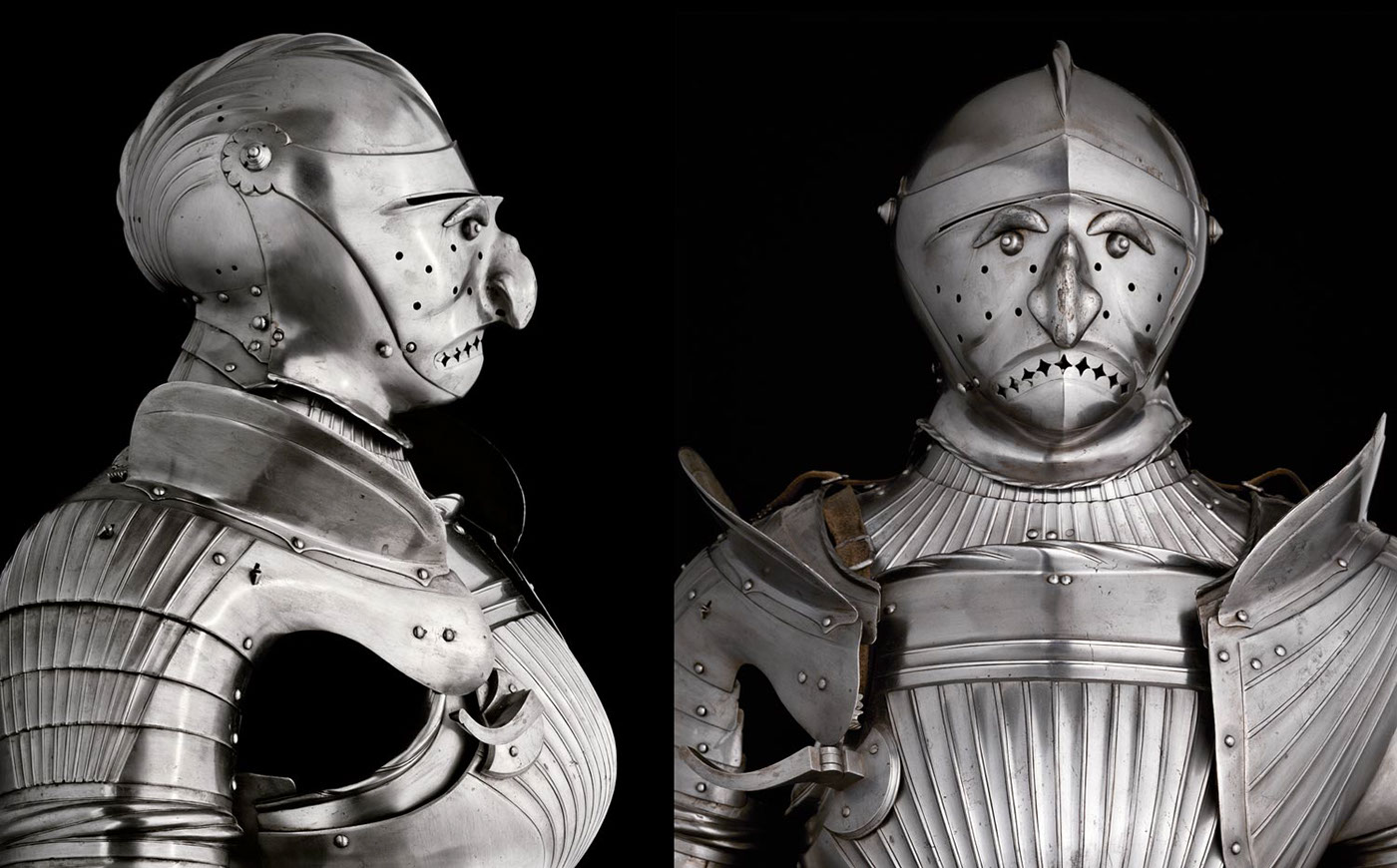
Armor with grotesque mask-style visor, probably used for carnival tournaments. 1525-1530
Goldsmith: unknown, possibly Nurenberg
Goldsmith: unknown, possibly Nurenberg

Armor with grotesque mask-style visor, probably used for carnival tournaments, 1530
Owner: Duke Ulrich of Wuerttemberg
Goldsmith: Wilhelm von Worms the Elder. Nuremberg, Germany
Goldsmith: Wilhelm von Worms the Elder. Nuremberg, Germany
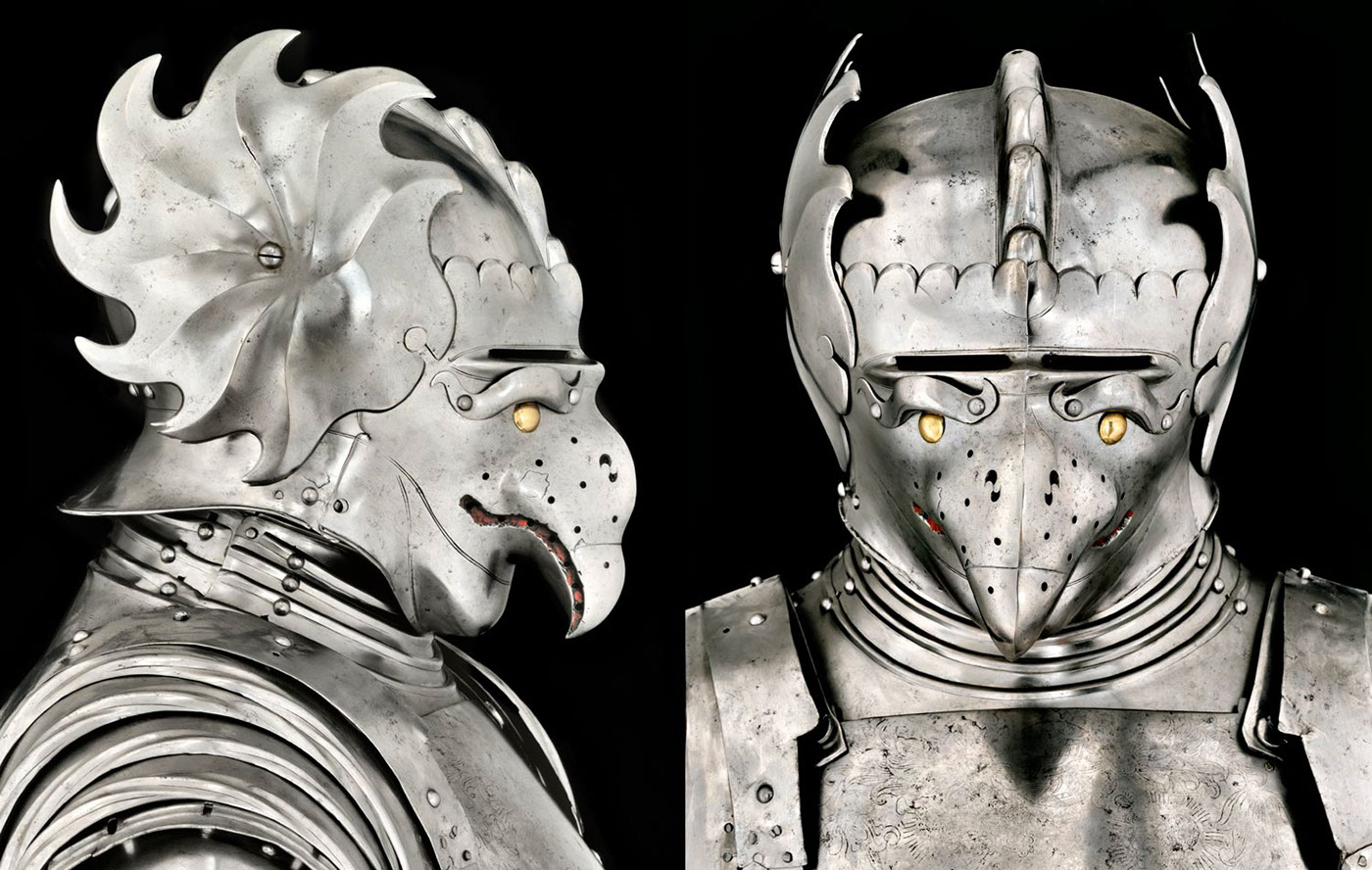
Parade armor with grotesque mask-style visor, 1526
Owner: Albrecht von Brandenburg, Duke of Prussia
Goldsmith unknown. Possibly Braunschweig, Germany
Owner: Albrecht von Brandenburg, Duke of Prussia
Goldsmith unknown. Possibly Braunschweig, Germany

Tournament costume armor in the form of Lansquenets dress, 1525
Owner: Count Wilhelm von Roggendhorf, gifted by Charles V
Goldsmith: Kolman Helmschmid. Carver: Daniel Hopfer. Augsburg, Germany
Owner: Count Wilhelm von Roggendhorf, gifted by Charles V
Goldsmith: Kolman Helmschmid. Carver: Daniel Hopfer. Augsburg, Germany
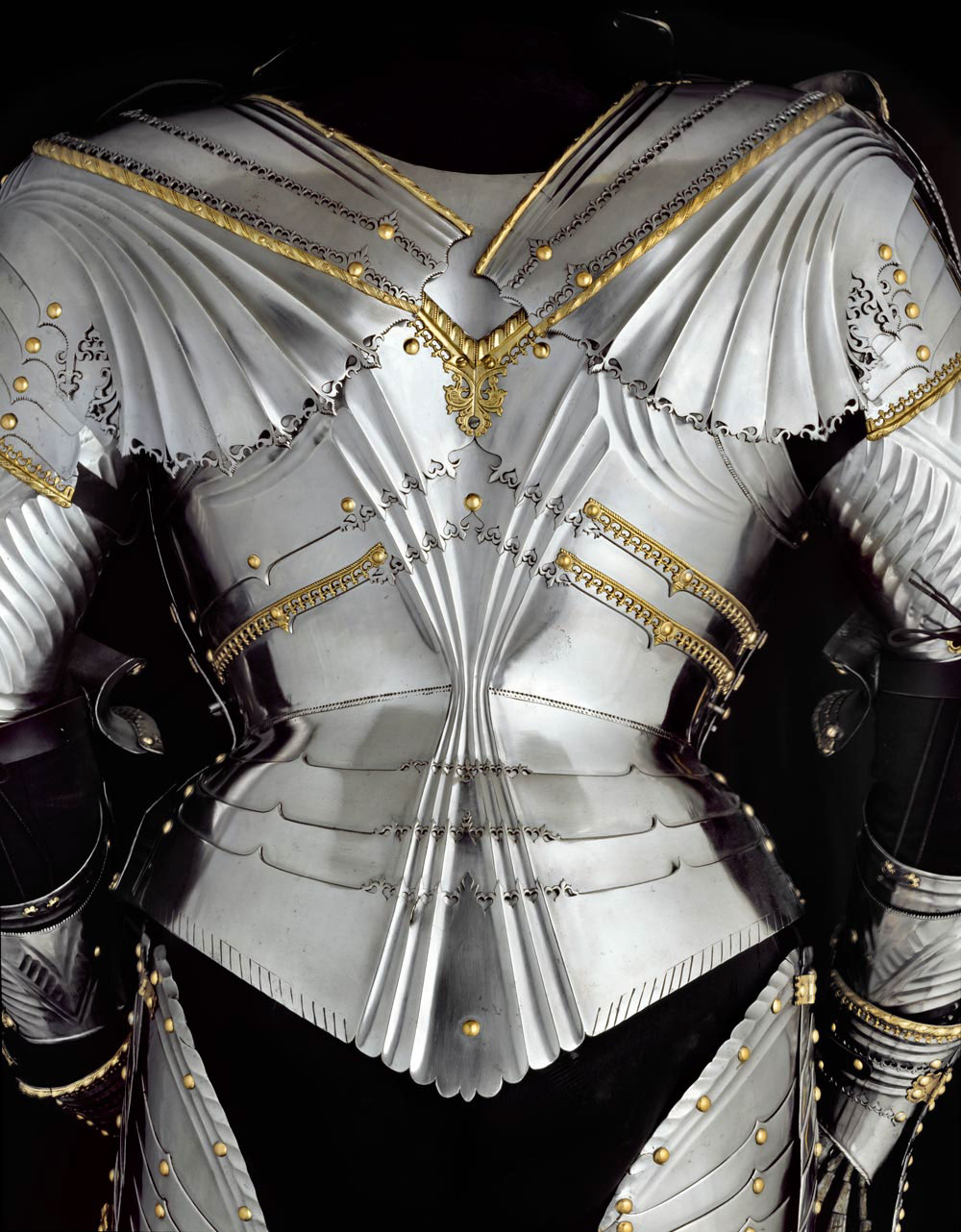
Elegant armor in "German" style, 1485
Owner: Maximilian I
Goldsmith: Lorenz Helmschmid. Augsburg, Germany
Owner: Maximilian I
Goldsmith: Lorenz Helmschmid. Augsburg, Germany
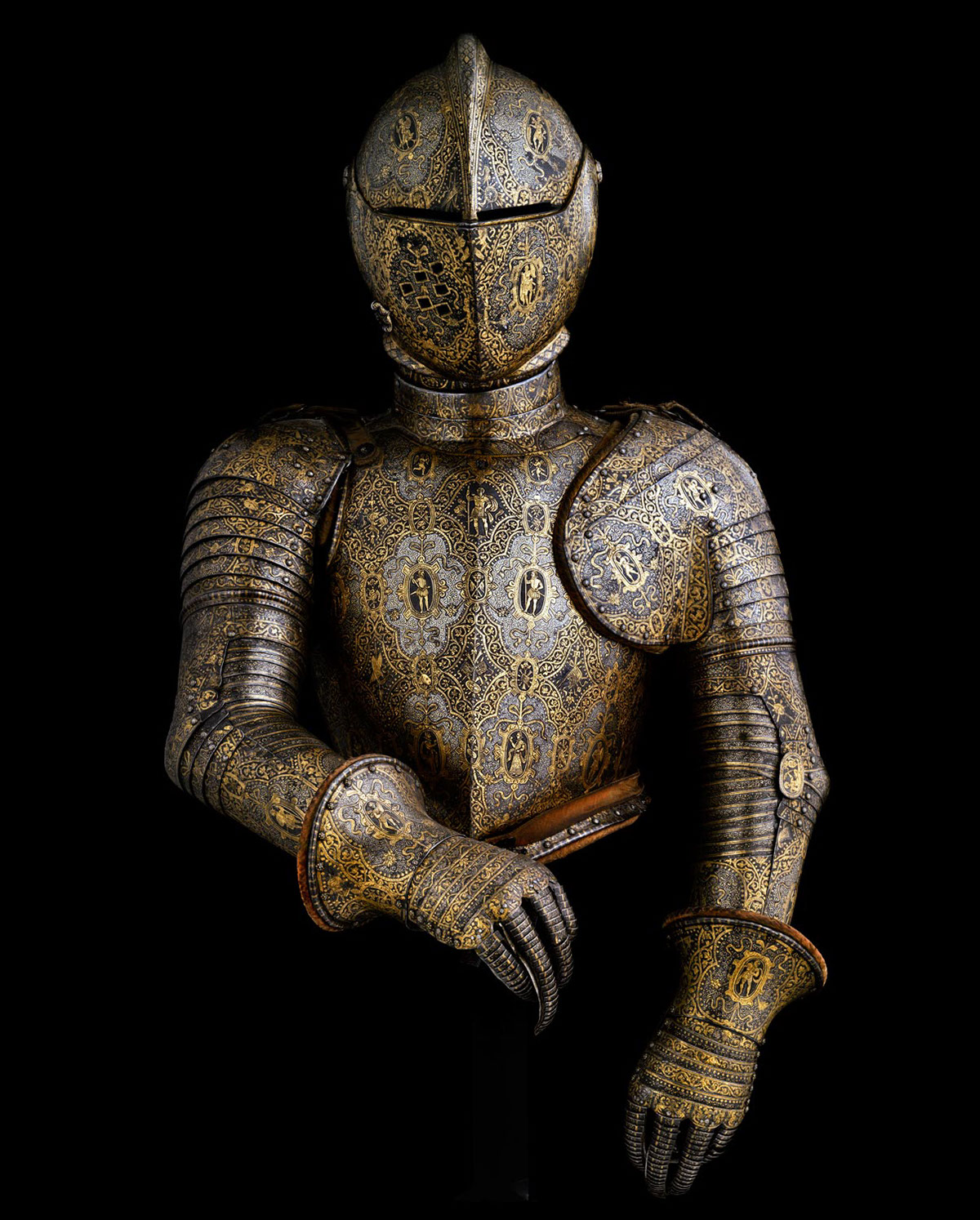
Foot tournament half armor. 1600
Owner: Emperor Ferdinand II Von Hapsburg
Goldsmith: I.O. Milano, Italy
Owner: Emperor Ferdinand II Von Hapsburg
Goldsmith: I.O. Milano, Italy
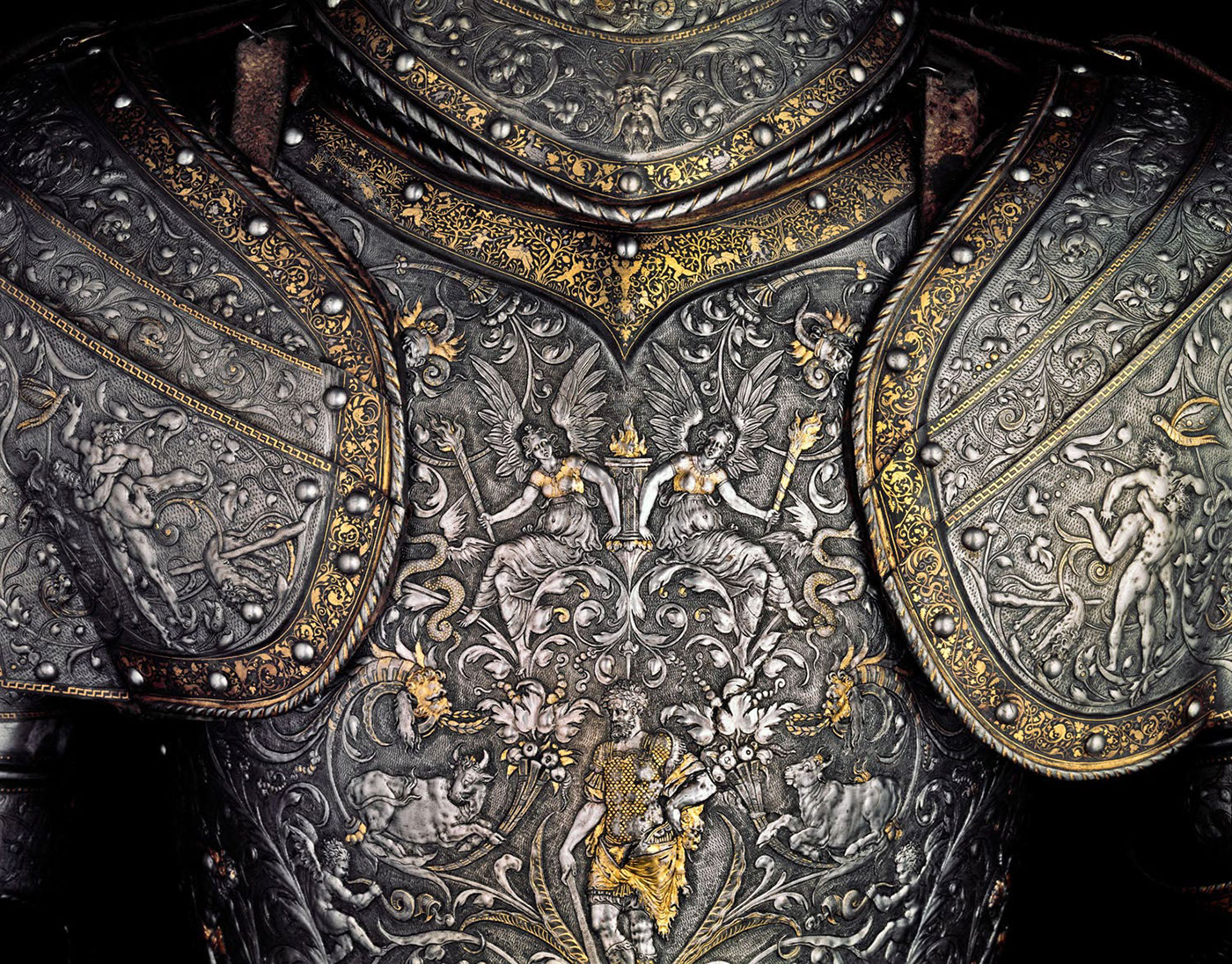
Parade armor describing the deeds and the victories in battle of the owner
Owner: Prince Maximilian, later Emperor Maximilian II of Austria
Goldsmith: Eliseus Libaerts Treibkünstler , Paris and Anvers, 1555
Owner: Prince Maximilian, later Emperor Maximilian II of Austria
Goldsmith: Eliseus Libaerts Treibkünstler , Paris and Anvers, 1555
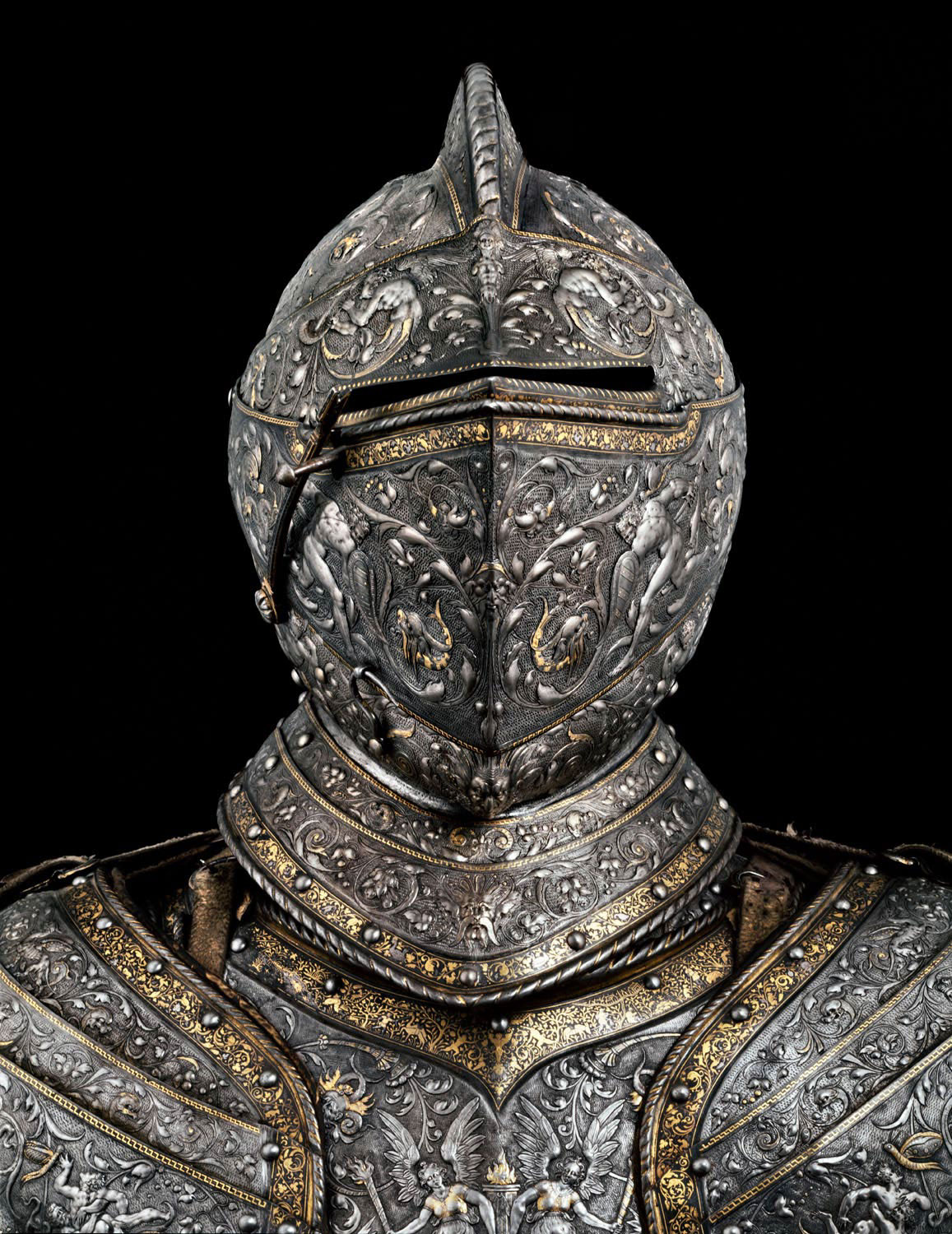
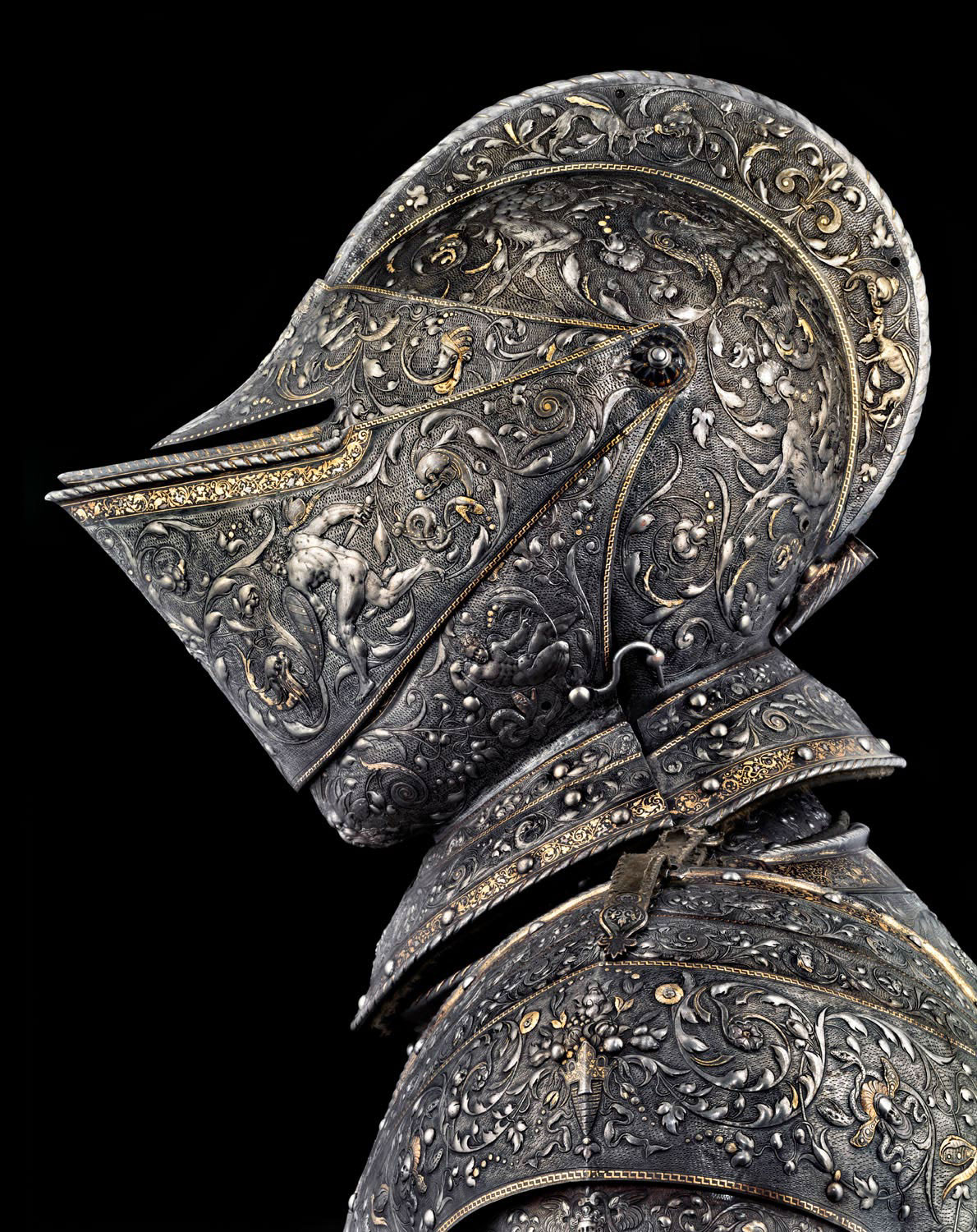
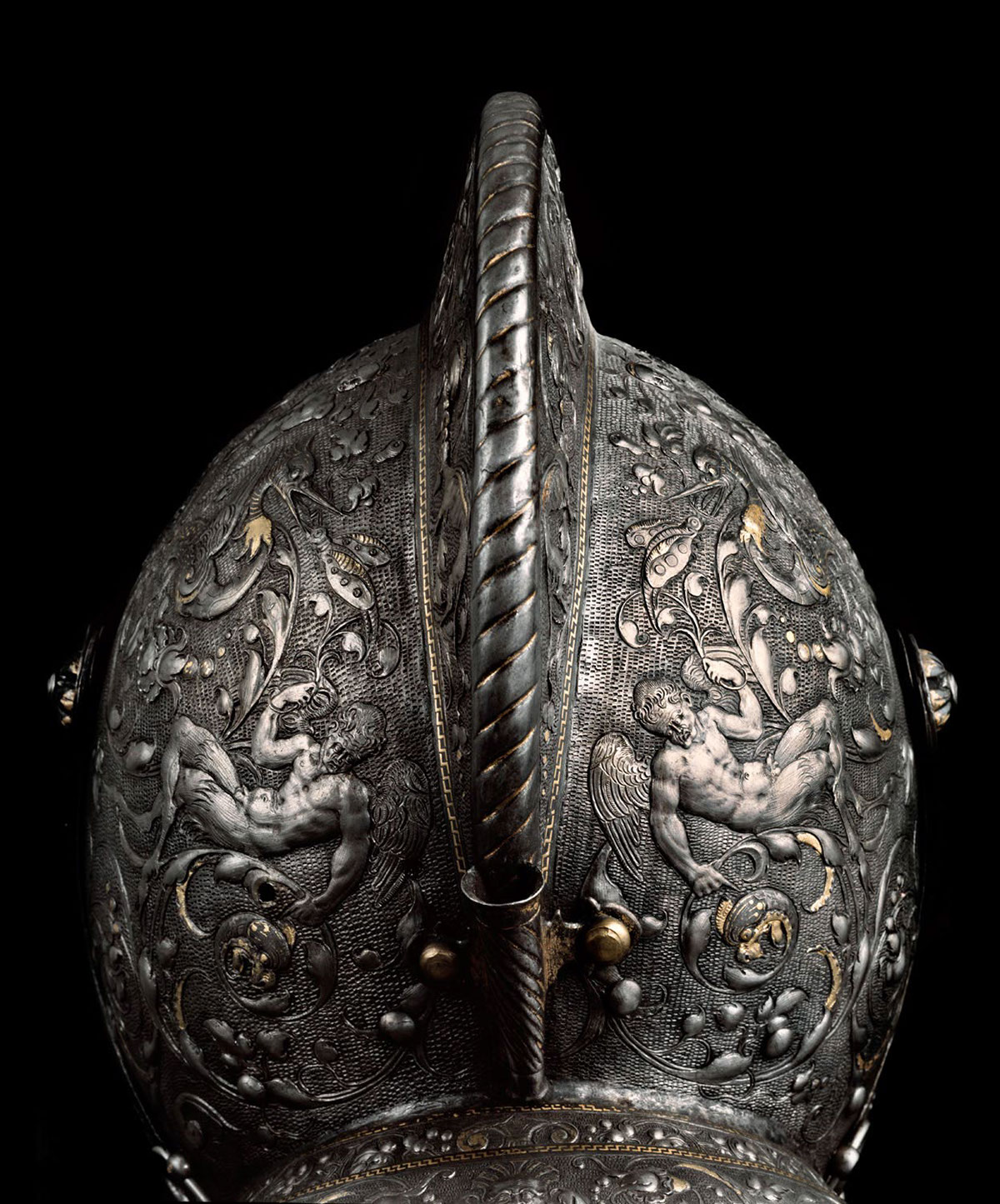

Armatura alla Romana (Roma Style Armor)
Owner: Francesco Maria della Rovere, Duke of Urbino
Goldsmith: Filippo Neroli, Milano 1532
Owner: Francesco Maria della Rovere, Duke of Urbino
Goldsmith: Filippo Neroli, Milano 1532
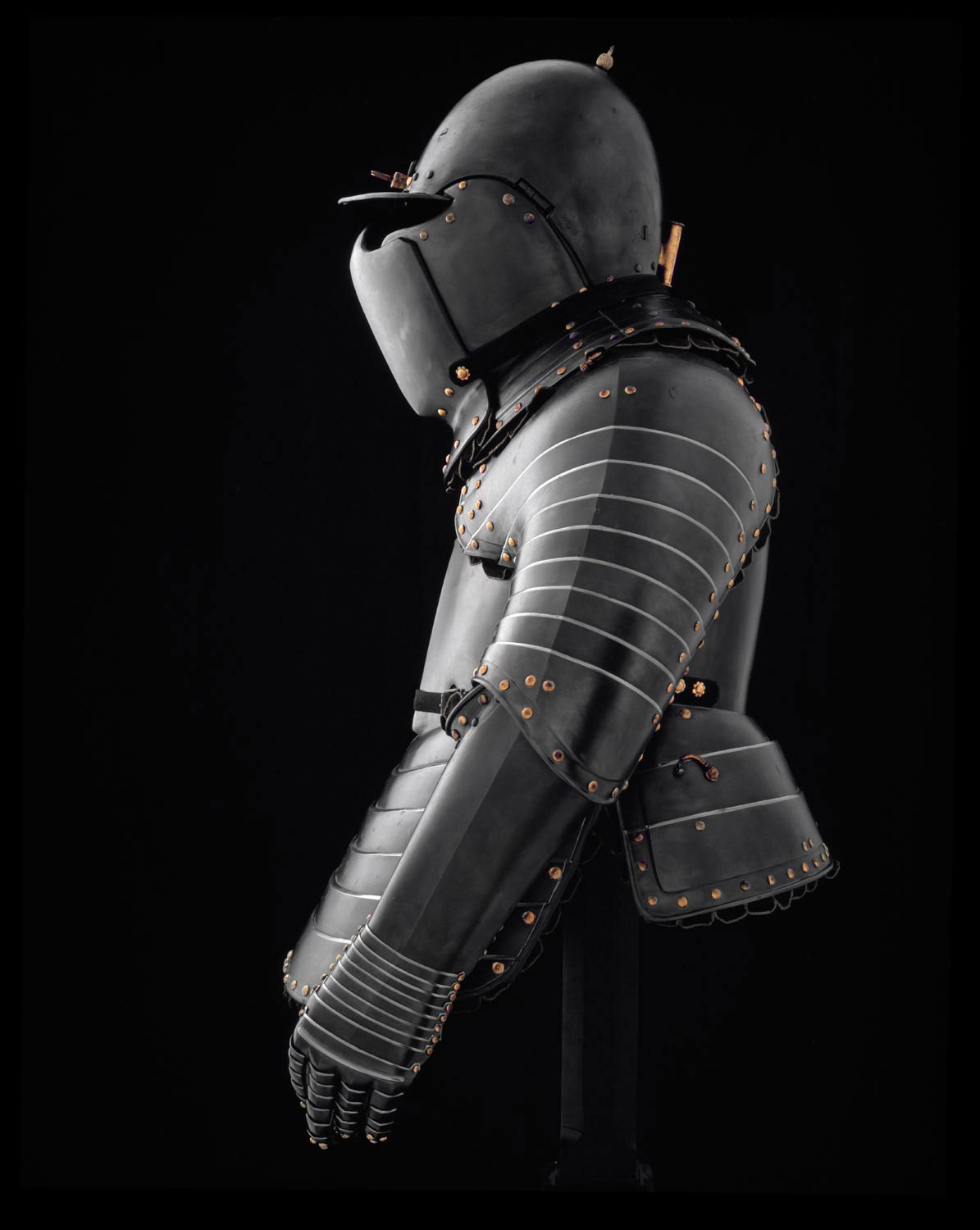
Battle Armour
Owner: the Archduke of Tyrol Leopold V
Goldsmith: Hans Jakob Topf, Innsbruck c. 1620
Owner: the Archduke of Tyrol Leopold V
Goldsmith: Hans Jakob Topf, Innsbruck c. 1620

